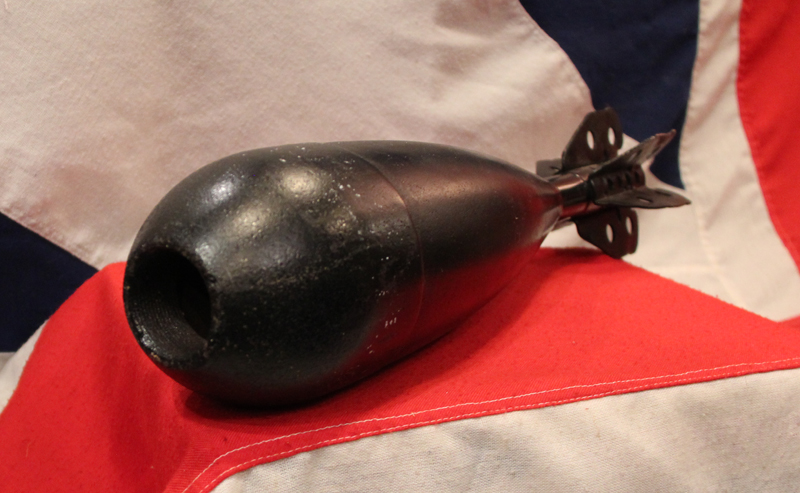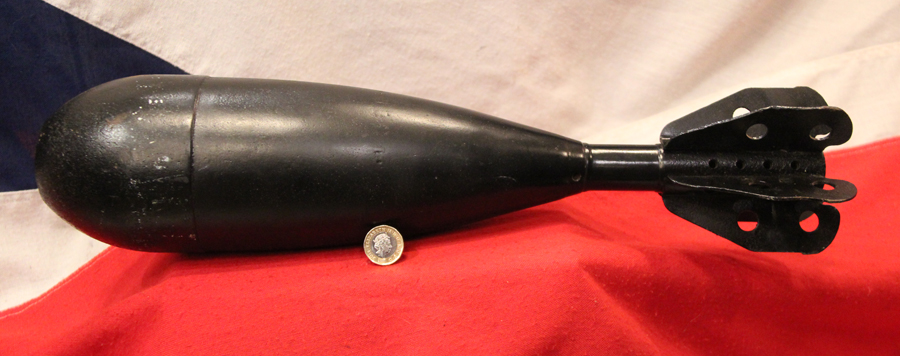A Most Rarely Seen Inert WW2 British Heavy 4.2" Morter Bomb
The 4.2-inch mortar was a Smooth Bore (SB) weapon of the Stokes pattern and was designed by the Armaments Research and Development Establishment and produced by the Royal Ordnance Factories. It entered widespread British service in 1942, equipping chemical warfare companies of the Royal Engineers (RE). The Mark 3 became the standard model.
The first combat use was at Second Battle of El Alamein, when the 66th Mortar Company (RE) was attached to the Australian 24th Infantry Brigade. During the battle, 66 Mortar Coy provided intense, effective supporting fire on 24 Bde's exposed right flank, as the infantry advanced, expending all of the 4.2-inch HE mortar ammunition in the theatre.
Around mid-1943, the Royal Engineer chemical warfare companies were disbanded as an emergency expedient and one heavy mortar company of each infantry division machine-gun battalion was equipped with the mortar. This company was organized with sixteen 4.2-inch mortars, in four platoons of four mortars each. In early 1944, divisions in Italy also held a pool of mortars for issue to other units as required, usually troops in the divisional anti-tank regiment, some regiments even converted one or more batteries to mortars.
Ordnance ML 4.2-inch mortars were slower to reach Commonwealth forces in the Pacific and Asia. Australian Army units in the South West Pacific theatre were reportedly the first to receive them, before forces in Burma. The 4.2-inch mortar entered production at the end of 1941 with a standard baseplate and tripod. The normal detachment was six men and it was transported with ammunition in a 10 cwt trailer, usually towed behind a Loyd Carrier. There was also an auxiliary baseplate that fitted around it, to increase its area for use on softer ground. Later an integrated trailer/baseplate was developed, called the Mk 1 Mobile Baseplate. The wheels, which were on suspension arms, were unlocked and raised for firing; the Mk1/1 had detachable wheels and the barrel with tripod attached, was stowed on top for towing. The mobile baseplate trailer mounting could be brought into action by 2 men. Regarding rate of fire, one source reports a crew putting 23 bombs in the air before the first impacted Weight 7.2 Kilos, height 18.5 inches, 4.2 inches across. Inert empty and guaranteed safe. Not Available for Export
Code: 21969
Price
on
Request









